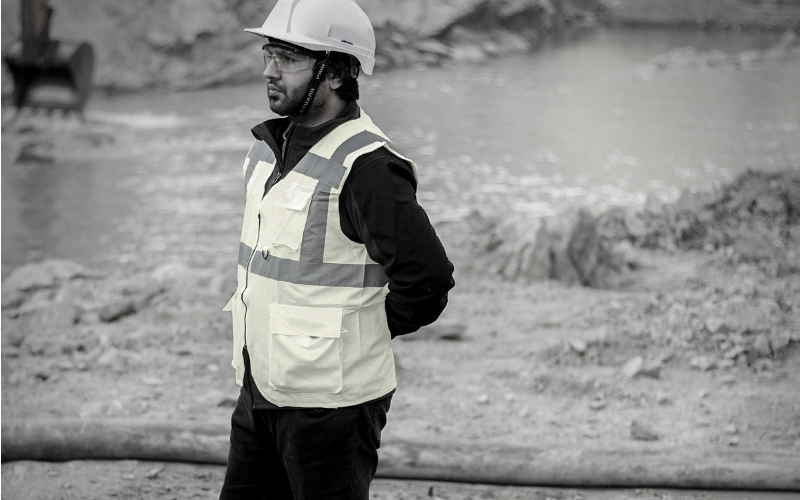Employers in the 21st Century face myriad of conundrums when considering the balance between the health and wellbeing v health and safety of employees.
First of all, there’s all the legislation to meet that surrounds health and safety, because let’s face it if you don’t, you could end up breaking the law and face a hefty fine or even imprisonment, depending on the severity of the offence.
Health and wellbeing, however, is about having a flexible and more holistic attitude towards employees.
To be more precise, it’s a consideration of every aspect of people’s health within the organisation, i.e. their physical, social and mental wellbeing, rather than just focusing on the physicality of the environment and the physical safety of your staff.
And as health and safety can sometimes be seen to be a bit, well, you know, ‘excessive’, this can seem quite oppressive and some may even suggest, it can have a detrimental effect on mental health.
So how do you balance health and wellbeing v health and safety?
Read on to find out!
Managing the Health and Wellbeing of your Employees
 As we’ve already outlined in the introduction, looking after the health and wellbeing of your employees includes not just the physical, but showing consideration for their social and mental wellbeing too.
As we’ve already outlined in the introduction, looking after the health and wellbeing of your employees includes not just the physical, but showing consideration for their social and mental wellbeing too.
This really involves reflecting honestly on the whole culture of your organisation, and asking yourself sometimes difficult questions such as, ‘is the atmosphere positive?’ or ‘Is there an unusually high number of employees absent through ill health?’
To put it another way, and thinking of the impact on the business, look at your sales figures. Is your business showing signs of unexplained decline?
It is true to say, that if people are unhappy in their work situation, they are less productive, more inclined to ill health and less likely to remain loyal to their employer. This almost certainly has a negative impact on the business turnover, as costs such as recruitment and staff cover go up, but production comes down.
And like it or not, we are all becoming more aware of our own sense of emotional wellbeing, our sense of self-worth and that need to be appreciated in more ways than just by financial recompense with a monthly salary.
It might sound like a lot of hocus pocus, holistic and new age nonsense, but trust us on this, considering corporate wellness, i.e. the physical, social and mental wellbeing of your employees is the new way in the 21st century of ensuring the business is operating at optimum levels of production and builds a sustainable future for the survival of the organisation.
Which let’s be honest, we all want to feel appreciated and valued, we all want to work in a positive environment, and we all want to feel well, it’s what makes us human!
Managing the Health and Safety of your Employees
Managing the health and safety of your employees is far more cut and dried.
As we said earlier, there are laws and legislation to follow that if you don’t, could mean you face some pretty probing investigations from the HSE, who can carry out regulatory inspections of the workplace to ensure safety standards are being met.
The main health and safety regulations, (which you can read more about here), state things like the responsibility of management to have a health and safety policy, and provide workers with information on safety in the workplace and occupational health. The regulations also outline the minimum standards of working conditions such as enough staff toilets, adequate lighting and the provision of first aid.
And far from being ‘excessive’, these regulations have been put in place out of necessity to reduce accidents and maintain the highest possible standards for workplace safety. Indeed, the U.K has been a driving force in the health and safety of employees since the industrial revolution, with laws passed to regulate the number of hours somebody can work, the amount of breaks an employee is entitled to and the legal entitlement to paid holidays.
So, rather than being seen as a negative requirement, or as something that needs ‘balancing’ with health and wellbeing, health and safety is actually a precursor to the newer, more contemporary way of working of managing corporate wellness, and the two really go hand in hand.
How Can Health and Safety Incorporate Health and Wellbeing?

Well, take staff holidays for example.
As we have already said, employees are legally entitled to holidays, so encourage your staff to take them! You can do this easily and by simply having a change of mindset that holidays are a good thing for the workplace, set the example by making sure you take your own holidays, ensure adequate cover is planned well in advance, and remind everybody that they will feel refreshed and revitalised after time away from work spent doing something they enjoy!
And how about providing positive activities for staff to be involved with during lunch and break times? You could think about a running or walking group, or encouraging participation in volunteering activities with local charitable organisations that the company supports?
You can also look at Wellness Apps that support employees by monitoring their health and wellness, offering advice on diet and exercise or maybe something more individual such as problems with sleep.
Which, if somebody is not sleeping well for example, could be indicative of a more serious problem such as stress, and could potentially lead to accidents that could otherwise have been prevented.
Contact us
So, as you can see, rather than it being a case of health and wellbeing v health and safety, the two actually go hand in hand, are actually complimentary to one another and ultimately, both benefit the workplace. Consequently, if you are an employer and you want to discuss how you can introduce health and wellbeing in to your organisation to support health and safety you can contact us here for more information or if you prefer, you can call us on 0808 178 0748










